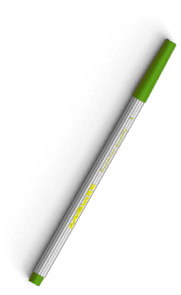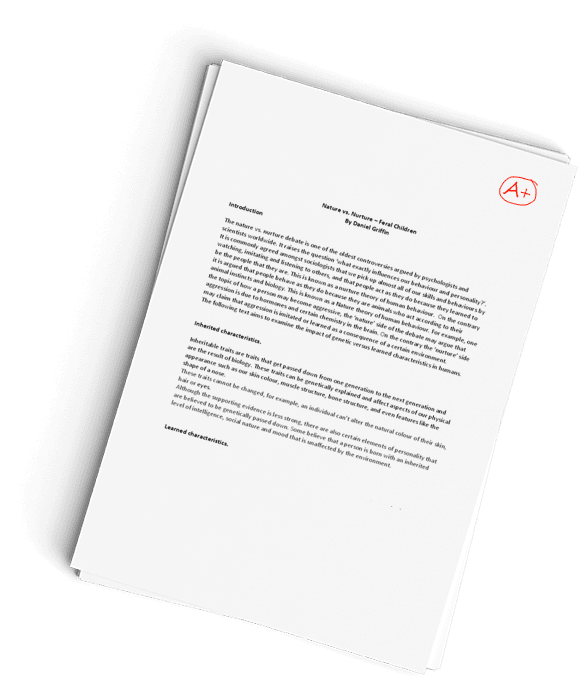Grantham University Ethical Dilemma Controversy Case Report
Question Description
Reminder: A report submitted without a Works Cited page and/or proper documentation throughout the report (in-text citations) will receive a grade of zero.
Ethical Dilemma/Controversy Researched Report
Directions: Choose an ethical dilemma or controversy connected to your career field and write a 5-7 page, double-spaced, formal researched report on the topic.
Ethics are the standards of conduct of a particular profession or group. A dilemma is defined as a situation in which one must choose between difficult alternatives. In an ethical dilemma, choosing between alternatives is challenging because ethical standards may be in conflict. Either choice may uphold one ethical standard but, at the same time, violate another. There may not be a clear cut way to choose between right and wrong.
Examples of a few ethical standards include:
- Journalists protect the identity of their sources and also avoid receiving money or other favors from those about whom they write.
- Health care professionals maintain patient confidentiality and also report public health hazards to government authorities.
- Mortgage lenders pledge to advise clients of all costs.
- Career counselors strive to avoid imposing their personal values or biases on those whom they advise.
The report should be geared for specific readers. In the workplace, reports may be read by multiple readers who have different levels of technical knowledge. You may choose to write for others in your career field, those who are still students, majoring in your career, or for a lay audience. The instructor, who may not be your intended audience, is a lay reader, so if the report is geared toward a technical audience, you will need to define terminology and provide more background about the issue.
The report will contain the following information:
- Summary of the ethical dilemma or controversy
- A discussion of the ethical issues relating to the dilemma
- A comparison of the different options for solving the dilemma
- A proposed solution containing your personal perspective
Ethical dilemmas and controversies are not always easily resolved. This research is designed to help you examine and analyze a controversy in your career field.
1. Requirements:
- Research: Must include a minimum of five (5) resources for the researched report.
- No more than two web sites (.gov, .edu, .org are acceptable, avoid .com unless instructor permission granted).
- NCLive is a database and therefore it acceptable to use a variety of sources from NCLive (Ebooks, articles, etc).
- Encyclopedias and dictionaries may be used but cannot be counted as part of the minimum five (5) required sources.
- Wikipedia cannot be used due to unreliability.
- Transmittal Correspondence: The report must be accompanied by a memorandum that provides an introduction of the report to the intended reader.
- Cover Page: The first page of the report must be a cover page.
- Must give the title of the report and the writers name and position.
- Must indicate the designated reader of the report as well as the readers position and the date the report is submitted.
- Table of Contents: The table of contents lists all elements and sections of the report that follow it, giving the page on which each part of the report begins.
- Must locate the parts of the report by page.
- Must give each section heading a title that accurately describes the contents of that section.
- Executive Summary: The report should contain a summary, (a miniature version of the report) that provides a brief, concise, well-organized overview of your report.
- Must be be 1/4th the length of the report.
- Must occur on a page by itself.
- Must be single-spaced.
- Text:
- Must be 5-7 pages.
- Must be broken down into sections and sub-sections with headings.
- Must be double-spaced and should use a size 12 font.
- Must begin with an introduction that states your reports purpose, scope and outlines what will be covered in the body of the report.
- Must end with a conclusion or recommendation section that reviews the main points of the reports discussion and/or offers recommendations.
- Page Numbering:
- The prefatory elements of the report (cover page, table of contents, executive summary) must be labeled with lower-case Roman numerals. (The title page counts as lowercase Roman numeral page one ( i ). However, the title page is not numbered).
- Each page after the title page before the introduction is numbered with lowercase Roman numerals (ii. iii).
- The first page of the body of the report that begins with the introduction is numbered with Arabic one (1), and each page thereafter is numbered consecutively. Be sure to reflect these page numbers correctly in your table of contents.
- Placement of page numbers:
- May place the page numbers in one of three places on the page: the upper right-hand corner, lower-right-hand corner or centered at the bottom of the page.
- Must be consistent in placement.
- Descriptive Headings:
- Must appear in the text exactly as they are listed in your table of contents.
- Must not title sections of your text with vague, general titles, such as Body or Discussion.
- Must break your report into sections and give each one a heading that describes the contents in the the section that follows it.
- Must break up long chunks of information under main headings with sub-headings.
- Visual Aid(s):
- Must contain one visual aid in the body of the report.
- Must be prepared neatly and labeled appropriately as a Table or Figure and given a title.
- Must include a citation for where the visual was obtained directly below the visual aid.
- Each visual must be located with the text it illustrates, not later.
- Must discuss each visual in the report.
- Parenthetical Citations: Citations are a required part of the researched report. They document your use of quotes, paraphrases, unusual or unique information, or the opinions of others.
- Only MLA parenthetical (in-text) citation format is acceptable. Do not use APA style (in-text) or on Works Cited page to avoid earning a zero grade.
- Works Cited: A list of all sources actually used in the report must be included at the end of the document.
- Must be included as the last page of your report.
- Must be arranged in alphabetical order by the last name of the author. If no author is listed, entries are arranged by the first important word in the title.
- Must not be numbered.
- Optional Components: All optional components must be labeled in the Table of Contents.
- An Appendix can include materials useful to the readers understanding of the report that must be located at the end of the report after the Works Cited page.
- if the report contains many technical terms, a glossary must be created. The Glossary is also located at the end of the report.
Have a similar assignment? "Place an order for your assignment and have exceptional work written by our team of experts, guaranteeing you A results."








